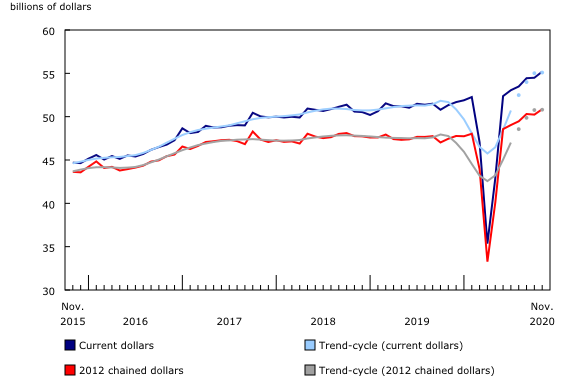42,000 applications received for new Ontario Small Business Support Grant
The Ontario government has received more than 42,000 applications for the Ontario Small Business Support Grant. Businesses that have been approved can expect to receive payment within about 10 business days. During the Provincewide Shutdown all eligible small businesses facing challenges are being encouraged to apply for this financial support and receive at least $10,000 and up to $20,000. If you have not yet applied, visit Ontario.ca/COVIDsupport to check your eligibility and submit an application.
Ontario investing in Niagara producer of hand sanitizer dispensers
The Ontario government is investing $2 million from the Ontario Together Fund to support OPHARDT Hygiene Technologies Inc. as they expand the local manufacture of soap and sanitizer dispensers, creating 75 new jobs and retaining 96 positions while producing vital products to support the fight against COVID-19. With Ontario’s support, OPHARDT will expand its facilities and move the manufacture of soap and sanitizer dispensers from overseas to Beamsville. The company will increase production to 300,000 dispensers and one million dispenser drive modules per year in Ontario. This will help deliver convenient and precise hygiene solutions to high-traffic areas including airports, shopping malls and medical facilities.
Call for proposals: Government of Canada Sectoral Initiatives Program
Today, the Minister of Employment, Workforce Development and Disability Inclusion, Carla Qualtrough, announced that the Government is investing $72 million over three years as part of the Sectoral Initiatives Program’s existing funding. Distributed through a call for proposals, which will remain open for six weeks, this investment will fund sector-specific projects to help Canadian workers gain skills and access resources. It will also help businesses and networks scale up strategies to drive job growth and create standards for education and certification purposes.
The call for proposals will remain open for six weeks, with a closing date of March 4, 2021. Eligible recipients include:
- not-for-profit organizations
- for-profit organizations
- Indigenous organizations
- provincial, territorial and municipal governments, institutions, agencies or Crown corporations
Eligible organizations may submit more than one application to the call for proposals. Additional consideration will be given to projects that help reduce barriers to entry into the labour market for persons with disabilities, women, youth, Indigenous people, newcomers or visible minorities. A backgrounder on the project is available here. Further details, including applications, can be found here.
Niagara Regional Council approves 2021 budget
At its meeting on Jan. 21, Niagara Regional Council approved a budget for 2021. The Niagara Region budget is made up of three components: the levy operating budget, rate operating budgets, and the capital budget. The 2021 operating budget contains an overall property tax increase of 1.8 percent to the taxpayer. For the average property assessed at $278,764, the Regional portion of the tax bill will increase by $29, totalling $1,640 in 2021. Highlights of the budget include:
- COVID-19 costs for 2021 estimated at $17.8 million, fully funded with Safe Restart and other provincial funding to include a Pandemic Response Team that will allow Niagara Public Health to mitigate future risk to public health
- West Lincoln Hospital Redevelopment Contribution – $1.5 million annual contribution to reserve (for a $12.6 million commitment) toward expansion of health services in west Niagara
- EMS system transformation of $1.3 million will continue to ensure high quality patient care while avoiding incremental costs of ambulances
- An additional $2 million or 0.5 per cent of the 2021 tax increase is dedicated to enhancing funding for critical infrastructure, such as roads reconstruction and bridge replacement
- Use of $4.3 million in reserves to mitigate the impacts of operating budget pressures on the taxpayers
Nominations for St. Catharines volunteer, and good neighbour awards open
Nominations open today, Jan. 22, for the City of St. Catharines annual Volunteer and MyHoodSTC Awards. The awards, returning this year in a digital format, will recognize volunteers and good neighbours from across the city during Canada’s National Volunteer Week from April 18 to 24. Volunteer awards are divided into three categories, the Volunteer Recognition Award; Mayor’s Adult Volunteer of the Year; and the Margaret and Robin MacLennan Youth Volunteer of the Year Award. A full list of awards, and nomination forms, can be accessed at www.engagestc.ca/VolunteerAwards. Nominations close Feb. 26. Nominees will be provided with awards delivered to their homes, alongside online recognition during volunteer week.
Welland supporting outdoor patios and displays
The City of Welland, as part of its efforts to support local restaurants and retail businesses, is extending the 2020 streamlined approval process for temporary outdoor patios and adding outdoor displays for 2021.
The following temporary city initiatives will be in effect for 2021:
- Temporary patios and/or outdoor displays permitted on private property that comply with city guidelines.
- Road occupancy permit fees waived for businesses for the 2021 calendar year related to patio installation and/or outdoor displays.
- Cash-in-lieu of parking requirement for outdoor patios at $0 per parking space for the remainder of 2021, where there is a need to convert required parking spaces into a temporary outdoor patio. Applicants will be required to enter into an agreement with the City of Welland.
- Site plan exemption fees waived for outdoor patios and/or outdoor displays for businesses
- Existing approved outdoor patios and outdoor displays on private property are permitted to continue without the need for additional approval from the City, unless there is a proposal to enlarge and/or create a new patio
For more information regarding patios on public sidewalks or parking spaces and outdoor displays, contact 905-735- 1700 ext. 2212 or email traffic@welland.ca.
Retail sales rise at fastest pace since September
 Retail sales rose 1.3% to $55.2 billion in November. This was the seventh consecutive monthly gain. The increase was led by higher sales at food and beverage stores, along with an uptick in e-commerce sales. Core retail sales—which exclude gasoline stations and motor vehicle and parts dealers—rose 2.6% on higher sales at food and beverage (+5.9%) and general merchandise (+1.6%) stores, as well as building material and garden equipment and supplies dealers (+2.2%).
Retail sales rose 1.3% to $55.2 billion in November. This was the seventh consecutive monthly gain. The increase was led by higher sales at food and beverage stores, along with an uptick in e-commerce sales. Core retail sales—which exclude gasoline stations and motor vehicle and parts dealers—rose 2.6% on higher sales at food and beverage (+5.9%) and general merchandise (+1.6%) stores, as well as building material and garden equipment and supplies dealers (+2.2%).
Because of a resurgence in COVID-19 cases in Canada, government officials began to reintroduce physical distancing measures, which directly affected the retail sector. Based on respondent feedback, approximately 3% of retailers were closed during November. The average length of the shutdown was one business day.
In November, sales at motor vehicl e and parts dealers (-0.9%) declined for the first time since April. Sales were down at three out of four store types, led by new car dealers (-1.0%). New motor vehicle sales were down 6.7% year over year in dollar terms in November. Sales of trucks, an aggregate group that includes light trucks, heavy trucks and buses, decreased 4.0% year over year, while passenger car sales (-20.5%) were down by one-fifth. Nevertheless, new motor vehicle sales were up 7.6% compared with pre-pandemic levels (February 2020).
Core retail sales (+2.6%) rose for the fourth consecutive month in November. The growth was led by food and beverage stores (+5.9%), specifically supermarkets and other grocery (except convenience) stores (+6.5%). General merchandise stores (+1.6%) reported higher sales in November, following a 0.5% decline in October. Sales at building material and garden equipment and supplies dealers (+2.2%) rose for the fourth consecutive month. Clothing and clothing accessories store (-3.0%) sales fell for the second month in a row, with all three store types reporting declines, led by clothing stores (-2.8%).
On an unadjusted basis, retail e-commerce sales reached $4.3 billion in November, accounting for 7.4% of total retail trade—the largest share since May. The share of e-commerce sales out of total retail sales (7.4%) rose 2.0 percentage points from October and was up 3.0 percentage points year over year. The rise in sales coincided with retailers urging online shoppers to buy early to avoid shipping delays, as well as promotional events such as Black Friday.
Retail e-commerce sales were up by three-quarters (+75.9%) year over year in November, while total unadjusted retail sales increased 5.8%.
Reading recommendations
3 Questions And The Emerging Answers About COVID-19 Vaccine Protection
Richard Harris, NPR
As the COVID-19 vaccine rolls out, three big questions loom. First, can someone who has been vaccinated still spread the disease? Second, will the vaccine remain effective as the virus itself evolves? And third, how long will the vaccine’s protection last? Answers to these questions lie in our immune systems. And the answers aren’t straightforward because our immune systems are both remarkably adept and remarkably challenging to predict.
What We Can Learn from the Fall of MEC
Max Fawcett, The Walrus
Thousands of Canadian businesses closed their doors for good in 2020, during the first wave of the pandemic, but few commercial casualties attracted more attention than MEC, the popular Vancouver-based retailer that sold outdoor-recreation gear. Canadian Running Magazine described MEC’s sale last September to a US private-equity firm as the “death of an ideal,” and numerous reports used language more fitting for the passing of a close relative. A “Save MEC” campaign sprang up, attracting more than 140,000 signatures as of October. In the end, none of that was enough.
Niagara COVID status tracker
Niagara’s most up-to-date COVID statistics, measured against the targets for the various stages of the Ontario COVID-19 Response Framework, are presented below. This does not predict government policy, but is offered to give you an idea of where Niagara is situated and how likely a relaxation (or further restrictions) may be. These data are drawn daily from Niagara Region. The Grey-Lockdown level does not have its own metrics, but is triggered when the COVID-specific measurements in a Red-Control region have continued to deteriorate.
Note that the Provincewide Shutdown is not the same as the Grey-Lockdown level listed in the Ontario COVID-19 Response Framework, which has been suspended for the duration of the shutdown. Additional restrictions for businesses apply during the Shutdown. Businesses should not use the Response Framework as a guide during this time, but should instead refer to the Shutdown guidelines.
| December 18 | December 25 | January 1 | January 8 | January 15 | January 22 | January 29 | |
|---|---|---|---|---|---|---|---|
| Reproductive number | 1.4 | 1.8 | 1.4 | 1.1 | 1.0 | 0.7 | 0.9 |
| New cases per 100,000 | 101.2 | 267.3 | 469.8 | 575.8 | 507.1 | 295.5 | 250.6 |
| New cases per day (not including outbreaks) | 60.7 | 178.7 | 311.7 | 376.9 | 325.4 | 182.7 | 145.7 |
| Percent of hospital beds occupied | 97% | 95.2% | 98.2% | 103.2% | 104.5% | 103.6% | 106% |
| Percent of intensive care beds occupied | 78.8% | 77.3% | 87.9% | 87.9% | 90.9% | 89.4% | 93.9% |
| Percentage of positive tests | 6.1% | 15.6% | 28.1% | 28.6% | 26.6% | 21.2% | 16.2% |
Definitions:
- Weekly Incidence Rate: the number of new COVID-19 cases per 100,000 people per week
- Percent Positivity: the number of positive COVID-19 tests as a percentage of all COVID-19 tests performed
- Rt: the reproductive rate, or the number of people infected by each case of the virus



